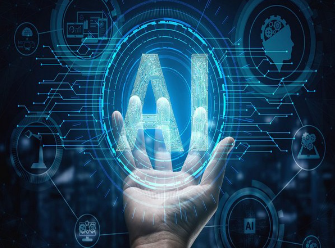The Impact of Artificial Intelligence on Labor Income:-
The Impact of Artificial Intelligence the integration of artificial intelligence (AI) into the global economy is no longer just a futuristic concept; it is reshaping industries and transforming the way we work. While AI promises to boost productivity and innovation, The Impact of Artificial Intelligence the latest report from the International Labour Organization (ILO) reveals a concerning downside: AI is contributing to a decline in labor income and exacerbating income inequality. This article will explore the findings of the ILO’s study, The Impact of Artificial Intelligence discuss the broader implications for workers and economies, and suggest possible solutions to mitigate the adverse effects of AI on labor income.
Understanding Labor Income and AI’s Role
Labor income refers to the portion of total income earned by workers through wages, salaries, and benefits. Traditionally, as economies grow, labor income tends to increase alongside productivity. However, the ILO’s World Employment and Social Outlook: September 2024 Update shows that this relationship is no longer holding. Over the past two decades, despite significant gains in productivity, The Impact of Artificial Intelligence income has stagnated or even declined in many parts of the world(
)(
).
One of the key drivers of this trend, according to the report, The Impact of Artificial Intelligence is the growing influence of AI and automation in various industries. AI, with its capacity to automate complex tasks, has reduced the need for human labor in certain sectors, leading to a shrinking share of labor income. While technological advancements have historically led to temporary disruptions in the labor market, the current wave of automation powered by AI appears to be more sustained and widespread.  for more information on this link
for more information on this link
).
Key Findings from the ILO Study
The ILO’s study presents several alarming trends that highlight the impact of AI on labor income:
- Declining Labor Income Share: The share of global income going to workers has declined by 0.6 percentage points between 2019 and 2022,The Impact of Artificial Intelligence a trend that has continued to remain flat(
). This decline represents a significant annual shortfall of approximately $2.4 trillion, which is in line with the longer-term decline of 1.6 percent observed between 2004 and 2024(
). The growing gap between labor productivity and income is a key indicator of the imbalance created by AI.
- Wage Growth Lagging Behind Productivity: Over the last 20 years, worker output per hour has increased globally by 58 percent, a remarkable achievement driven largely by technological advancements(
). However, The Impact of Artificial Intelligence income has only increased by 53 percent, creating a 5-percentage-point gap between productivity and wages(
). This disparity suggests that workers are not fully reaping the benefits of their increased productivity, The Impact of Artificial Intelligence with a larger share of the economic gains flowing to capital owners and businesses that invest in AI and automation technologies.
- AI’s Impact Across Industries: The ILO report emphasizes that AI’s impact is not confined to a single sector. In manufacturing, for example, AI-driven automation has streamlined production processes, The Impact of Artificial Intelligence reducing the need for human labor. Similarly, in the service sector, AI tools such as chatbots and virtual assistants are replacing customer service representatives, leading to fewer job opportunities in these roles(
).
- Rising Inequality: The decline in labor income is contributing to rising inequality within and between countries. Wealth is increasingly concentrated in the hands of capital owners and tech companies that control AI technologies, while workers, especially those in lower-paying jobs, The Impact of Artificial Intelligence are being left behind. The COVID-19 pandemic exacerbated this trend, with nearly 40 percent of the decline in labor income occurring during the pandemic years of 2020 to 2022(
). This decline has disproportionately affected vulnerable workers, The Impact of Artificial Intelligence including those in low-wage jobs and younger individuals, many of whom remain out of employment, education, or training(
).
The Role of Policy in Addressing the AI-Driven Decline
The ILO’s report makes it clear that the rise of AI and automation is not inherently negative. AI has the potential to boost productivity, drive innovation, and create new job opportunities in emerging fields. However, without proper policy interventions, the benefits of AI will continue to accrue primarily to capital owners, The Impact of Artificial Intelligence while workers bear the brunt of its negative impacts.
To address the AI-driven decline in labor income and reduce inequality, the ILO has proposed several policy recommendations:
- Universal Social Protection: Governments should prioritize offering universal social protection to all workers, regardless of their employment status. This includes access to healthcare, The Impact of Artificial Intelligence unemployment benefits, and retirement security. By ensuring that workers have a safety net, governments can help cushion the impact of AI-related job losses and provide support during periods of economic transition(
 for more information on this link
for more information on this link
).
- Promoting Collective Bargaining: The ILO emphasizes the importance of policies that support freedom of association and collective bargaining. When workers have the ability to negotiate with employers on issues such as wages and working conditions, they are more likely to share in the productivity gains generated by AI(
). Strengthening labor unions and encouraging collective action can help ensure that workers have a voice in shaping the future of work.
- Investing in Education and Training: As AI continues to reshape the labor market, The Impact of Artificial Intelligence it is essential to invest in education and skills training to help workers transition to new roles. Governments and businesses should collaborate to provide reskilling and upskilling programs that prepare workers for jobs in emerging industries, such as AI development, data analysis, and green technologies(
). By equipping workers with the skills needed to thrive in the AI-driven economy, policymakers can mitigate the risk of widespread unemployment.
 for more information on this link
for more information on this link - Ensuring Fair Distribution of AI’s Benefits: One of the central challenges posed by AI is the unequal distribution of its benefits. To counter this, the ILO recommends that governments adopt policies that ensure a more equitable distribution of economic gains. This could include measures such as progressive taxation, corporate profit-sharing programs, and the implementation of a decent minimum wage that keeps pace with productivity growth(
).
AI and the Future of Work: Challenges and Opportunities
The rise of AI presents both challenges and opportunities for the future of work. On the one hand, AI has the potential to drive innovation, create new industries, and improve the quality of life for millions of people. On the other hand, without the right policies in place, AI could exacerbate existing inequalities and lead to a further decline in labor income for workers.
As we move forward, it is crucial that policymakers, businesses, and workers The Impact of Artificial Intelligence collaborate to ensure that the benefits of AI are widely shared. This means investing in education and training, promoting collective bargaining, and implementing policies that support an equitable distribution of wealth. By taking a proactive approach, we can harness the potential of AI to create a more inclusive and sustainable economy for all.
Conclusion
The latest ILO report serves as a wake-up call for governments and The Impact of Artificial Intelligence businesses around the world. AI and automation are reshaping the global economy, and while these technologies offer immense potential, they also pose significant challenges for workers. The decline in labor income and the rise in inequality highlight the need for immediate action to ensure that the benefits of AI are shared equitably.
By adopting forward-thinking policies and The Impact of Artificial Intelligence investing in workers, we can mitigate the negative impacts of AI and create a future where technological progress benefits everyone. The ILO’s recommendations provide a roadmap for achieving this vision, but it will require strong political will and collaboration between all stakeholders. The future of work depends on our ability to navigate the challenges posed by AI while ensuring t ALSO READ: GoPro Launches Two New Cameras: Hero and Hero 13 Black in India – A Comprehensive Look at Features, Specs, and Pricing 2024




